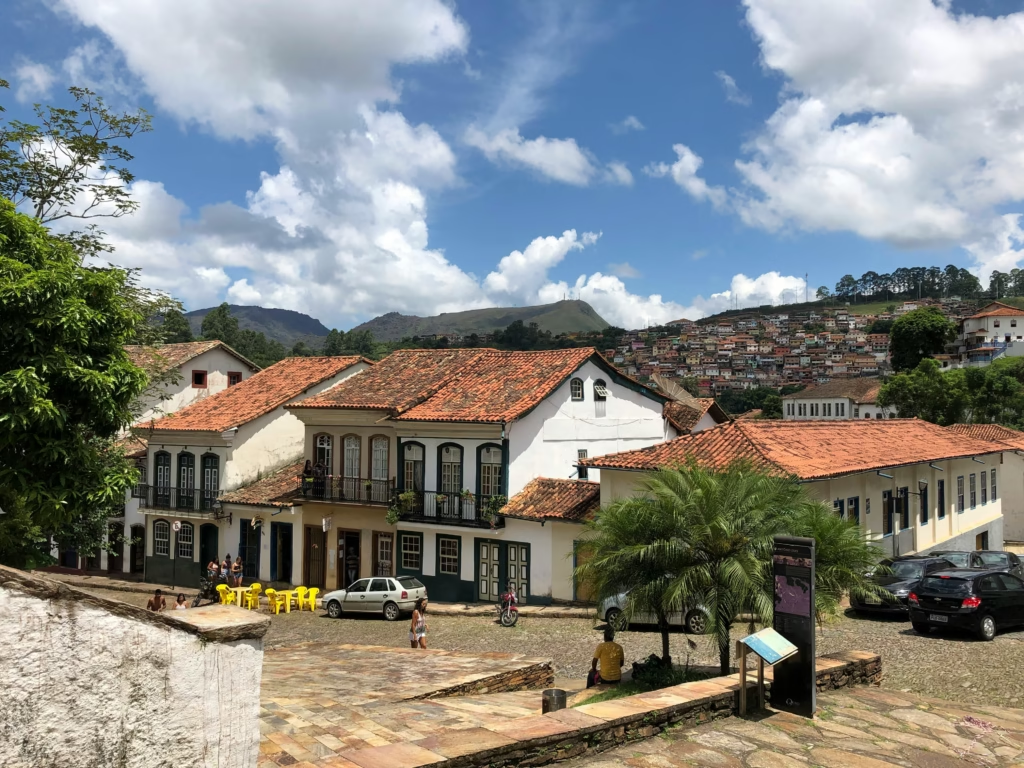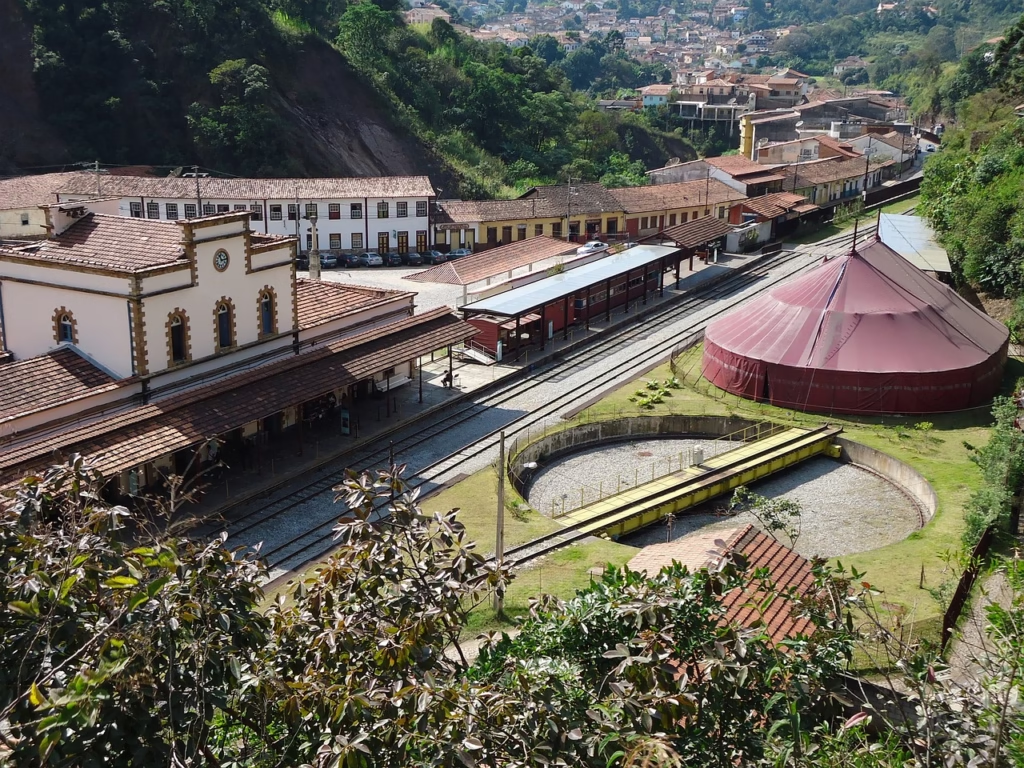A Glimpse into Ouro Preto’s History
Ouro Preto, a city nestled in the heart of Minas Gerais, has a rich and complex history that traces back to its origins in the 17th century during the Brazilian Gold Rush. Initially, the area was inhabited by indigenous communities, but it became a focal point for Portuguese explorers and settlers seeking gold. The influx of wealth led to rapid development, establishing Ouro Preto as a significant colonial town. The name “Ouro Preto,” which translates to “Black Gold,” refers to the dark gold ore that was discovered in the region, which attracted many fortune-seekers.
The colonial architecture of Ouro Preto stands as a testament to its historical significance. The city is renowned for its well-preserved baroque buildings, charming cobbled streets, and stunning churches adorned with intricate details. Some of the most noteworthy structures include the Church of São Francisco de Assis and the Igreja de Nossa Senhora do Rosario, each reflecting the artistic talents of the period. In recognition of its historical and cultural importance, UNESCO designated Ouro Preto as a World Heritage Site in 1980, ensuring the preservation of its unique architectural and artistic legacy.
Throughout its history, Ouro Preto has been a melting pot of culture and ideas. It was not only a prominent mining center but also a hub for arts and education. Key historical figures, such as the renowned Brazilian sculptor Aleijadinho, left an indelible mark on the city’s cultural landscape, influencing art and architecture across Brazil. The city also played a pivotal role during the Inconfidência Mineira, a movement advocating for independence and social reform, which has had lasting repercussions on Brazil’s national identity. Understanding this rich historical context is essential for appreciating the attractions and activities that Ouro Preto offers to visitors today.
Top Historical Landmarks to Visit
Ouro Preto, a city rich in history and culture, is renowned for its striking colonial architecture and historical significance. Among its must-visit landmarks, the Church of Saint Francis of Assisi stands out due to its Baroque design, attributed to the prominent artist Aleijadinho. This architectural masterpiece features intricate woodwork, stunning ceiling paintings, and an impressive façade that exemplifies the peak of Brazilian colonial art. Visitors are encouraged to admire the church’s ornate altar and explore its serene surroundings, which often host religious events and cultural programs throughout the year, making it a vibrant part of the community.
Another significant site is the Imperial Museum, housed in a former palace that served as the residence of Brazil’s last emperor, Dom Pedro II. This museum not only showcases an array of royal artifacts but also holds exhibitions that reflect the socio-political history of Brazil during the Imperial period. The museum is a great place to learn about the cultural context of the region, with guided tours typically available. It is advisable to check the museum’s schedule for any temporary exhibitions or special events that may enhance the visitor experience.
The Church of Our Lady of the Rosary is yet another remarkable landmark, revered for its Baroque style and vibrant interior. Founded by enslaved Africans in the 18th century, it stands as a testament to their artistic influence in Brazilian history. The church is known for its captivating artwork and bell towers that contribute to Ouro Preto’s skyline. Visitors should take note of the church’s operating hours, as they may vary, particularly during festive seasons when special services and activities occur.
By planning ahead and being aware of the historical significance and visitation details of these landmarks, guests can enrich their experience in Ouro Preto while appreciating its architectural beauty and cultural heritage.
Nature and Outdoor Activities in Ouro Preto

Ouro Preto, renowned for its rich history and baroque architecture, also boasts an impressive array of natural landscapes and outdoor activities that appeal to nature enthusiasts and adventure seekers alike. Surrounding the city, visitors can find stunning hiking trails that offer breathtaking views of rolling hills and preserved greenery. One of the most notable locations is the Parque Natural Municipal das Andorinhas, a natural park that presents an exceptional opportunity to explore the region’s diverse flora and fauna. Here, hikers can traverse well-marked trails while admiring native plants and possibly spotting local wildlife.
The park’s trails cater to various skill levels, making it accessible to families, casual walkers, and seasoned hikers. As visitors ascend to the viewpoints, they can be rewarded with panoramic vistas of Ouro Preto and its surrounding environment, providing fantastic photo opportunities and a chance to appreciate the beauty of Minas Gerais. For those interested in an organized experience, guided tours are available, offering in-depth insights into the area’s ecology and history.
Outdoor enthusiasts will also find an array of adventure sports in and around Ouro Preto, including mountain biking and rock climbing. These activities allow participants to fully immerse themselves in the landscapes while engaging in exhilarating experiences. For families looking for enjoyable activities, there are picnic spots and leisure areas in the parks, ensuring a pleasant day amidst nature.
The combination of Ouro Preto’s scenic trails and ecological significance creates a unique eco-tourism destination. Whether venturing out for an invigorating hike or participating in family-friendly outdoor excursions, visitors will discover the region’s natural beauty and recreational opportunities. As such, exploring the outdoor activities available in Ouro Preto is not only enjoyable but also highlights the importance of preserving this remarkable environment for future generations.
Culinary Delights and Local Culture
Ouro Preto, a historic gem nestled in Minas Gerais, offers visitors a remarkable journey through its vibrant culinary scene and rich local culture. The region is renowned for its traditional cuisine, which reflects its history and the diverse influences that have shaped it over the centuries. One of the hallmark dishes is pão de queijo, a delectable cheese bread that tantalizes with its chewy texture and rich flavor. Made primarily from tapioca flour and cheese, this snack can be found in various local eateries, serving as a staple for both locals and travelers alike.
Another must-try dish is feijão tropeiro, a hearty black bean stew enriched with a blend of ingredients such as pork, manioc flour, and spices. This dish is often enjoyed by families during gatherings and celebrations, showcasing the communal spirit that characterizes the region’s food culture. To explore these culinary delights, visitors can head to the local markets, where vibrant stalls overflow with fresh produce, homemade delicacies, and artisanal goods that provide a taste of Ouro Preto’s gastronomic heritage.
Beyond the culinary offerings, Ouro Preto boasts a rich cultural landscape. It is a hub for festivals that celebrate local traditions, music, and dance. Events such as the Festa de Nossa Senhora do Carmo and the Carnaval showcase the community’s spirited engagement with its heritage, offering a platform for local artists and performers to shine. Additionally, the town is known for its exquisite artisanal crafts, including pottery, textiles, and jewelry, which reflect the skill and creativity of its artisans. Visiting local craft shops allows tourists to take home not only souvenirs but also pieces of the region’s vibrant culture.
In summary, experiencing the culinary delights and local culture in Ouro Preto invites visitors to engage deeply with the authenticity of this enchanting town. From traditional dishes to lively festivals and artisanal craftsmanship, each element plays a vital role in shaping the unique identity of Ouro Preto.





